Change in Material Per Turn

This chart is based on a single playout, and gives a feel for the change in material over the course of a game.
Cairo Corridor is a non-disconnection-and-area-control abstract strategy game for 2 players.
Players take alternate turns placing a pentagon of their colour on an empty cell of the board, so that there is always at least one clear path of connected cells linking the 4 sides of the board. This type of path is called a Corridor.
The game ends when there is only one Corridor left, and no more pentagons can be placed adjacent to it. Adjacent means "sharing an edge, not just a corner".
The player with the most pentagons adjacent to the Corridor is the winner
General comments:
Play: Combinatorial
Family: Combinatorial 2013
Mechanism(s): Pattern,Connection
Components: Board
| BGG Entry | Cairo Corridor |
|---|---|
| BGG Rating | 7.28889 |
| #Voters | 45 |
| SD | 1.24047 |
| BGG Weight | 2 |
| #Voters | 4 |
| Year | 2013 |
| User | Rating | Comment |
|---|---|---|
| hakuus | 8 | Sublime abstract. Thank you Markus |
| ohnoitsnathan | 6 | |
| dawue | 7 | |
| taragalinas | 7 | Fun & fast |
| mrraow | 7 | I love the simple rules and topology, and there is great clarity compared with some of the odd-topology games I have played recently; however, I have yet to find a way to play strategically - the games I have played have come down to 1 point either way, and the outcome seems determined by decisions in the early game, whose consequences are beyond prediction at the time. |
| pyr-shep | 7 | |
| bayspiel | N/A | 05.02.05.02 |
| flowpiux | 6 | |
| Caversham | 8.5 | Very clever 2 player game. Fast paced, easy to learn but difficult to master. |
| edwardpjackman | 9 | Great use of the under-used Cairo board. Played several dozen times. Rules quick to explain. Not similar to any other abstract I've played -- and I've played 100's. (Ripe for adding a light theme -- maybe you are creating a road or a river where property is obviously more valuable.) |
| zefquaavius | 8 | I love the paradigm shift that happens in my mind as the corridor I was perceiving in the whitespace is suddenly rerouted by a placement. This is a really cool game. |
| toftof | 7 | |
| Qwzx | 7 | |
| gabriel_k | N/A | PNP |
| Jesussanchezpaez | 9 | |
| pled | 8.5 | |
| at010 | 7 | |
| Wentu | N/A | I have to admit it: I was trying to use Cairo tiling for one of my games but before getting too serious I wanted to know if someone already used it and... damn! Markus had the idea before me :) Good job Markus. I haven't tried the game so far but i adore the idea you had about the ending condition, it seems very original and interesting. I can't understand at the moment how easy it is to check for the end condition, but I'd really love to try it. Try to have it implemented somewhere online. They are looking for these kind of games on Boardgamearena! |
| tckoppang | 6 | Fun, spatial abstract that relies on pattern recognition and look ahead in multiple directions. It reminds me of the inverse of a game like Hex where the idea is simply to connect one side to the other. In Cairo Corridor, a connection is assumed. You are instead filling in the spaces around the connection, trying to amass the greater number of pieces alongside the corridor. The opening can seem chaotic, but I suspect that initial placement is more important that I now comprehend. As the board develops, keen spatial skills help you to visualize what the final layout may look like, and then make plans accordingly. Plays quick, and even if it isn't as deep as some other games of placement, it's highly enjoyable. Rating may rise. I think I have more fun with this game than my current rating indicates. Hmmm... have to think about that. I suppose I haven't quite seen the next "level" of the game, which gives me pause. Right now it's fun -- but I'm hoping to discover an extra level of strategy. |
| Aspudde | 6 | |
| jmastill | 9 | |
| SageClock | 8.5 | Very clever design, feels very different from most abstracts while having extremely simple rules. Only played once so far but looking forward to getting it to the table again. |
| b1sti | 7 | |
| Flashhawk | N/A | Autographed |
| drunkcrunkfranken | 8 | |
| HilkMAN | 7 | An extremely simple abstract that plays quickly and still fascinates me. |
| alekerickson | 10 | |
| Thesse1955 | 8 | |
| van00uber | 8 | |
| pleclenuesse | 7 | |
| grasa_total | 7 | Similar to Odd, a connection game where sometimes you try to connect and sometimes you try not to. I like how corner connections are strong for forcing the path's location but edge connections are better for scoring points (or, so it seems on one play). |
| ceenan | 8 | |
| russ | 7 | |
| Kaelistus | 7 | |
| Arcanio | 7 | |
| nestorgames | 9 | |
| no_where_dense | 5 | Too many ties... |
| lundi | 7 | |
| Peter The Rat | 7 | I like this little abstract game. I just suck at it ;). I like the unusal concept of building a corridor on the map and earning points for pieces next to it. As it uses pentagons as tiles it is quite unusual to place them and needs some time to getting used to it. |
| Jedrique | 6 | |
| fobs | 9 | |
| almo2001 | 7 | I really like this. It's clever and beautiful. My only complaint is that ties seem to be common. |
| Goateh | 6 | |
| Helmi68 | 9 | |
| rolle | 7 | |
| Jugular | 3 | |
| Zalbar | 6 | |
| thor.bsw | 7.5 | |
| L.S.G. | 7 |
| AI | Strong Wins | Draws | Strong Losses | #Games | Strong Win% | p1 Win% | Game Length |
|---|---|---|---|---|---|---|---|
| Random | |||||||
| Grand Unified UCT(U1-T,rSel=s, secs=0.01) | 36 | 1 | 0 | 37 | 98.65 | 36.49 | 40.59 |
| Grand Unified UCT(U1-T,rSel=s, secs=0.03) | 34 | 5 | 3 | 42 | 86.90 | 48.81 | 37.52 |
| Grand Unified UCT(U1-T,rSel=s, secs=0.07) | 31 | 10 | 9 | 50 | 72.00 | 56.00 | 37.20 |
| Grand Unified UCT(U1-T,rSel=s, secs=0.20) | 32 | 9 | 4 | 45 | 81.11 | 54.44 | 34.73 |
| Grand Unified UCT(U1-T,rSel=s, secs=0.55) | 32 | 8 | 8 | 48 | 75.00 | 68.75 | 34.33 |
Level of Play: Strong beats Weak 60% of the time (lower bound with 90% confidence).
Draw%, p1 win% and game length may give some indication of trends as AI strength increases; but be aware that the AI can introduce bias due to horizon effects, poor heuristics, etc.
| Size (bytes) | 26079 |
|---|---|
| Reference Size | 10577 |
| Ratio | 2.47 |
Ai Ai calculates the size of the implementation, and compares it to the Ai Ai implementation of the simplest possible game (which just fills the board). Note that this estimate may include some graphics and heuristics code as well as the game logic. See the wikipedia entry for more details.
| Playouts per second | 1708.34 (585.36µs/playout) |
|---|---|
| Reference Size | 544484.37 (1.84µs/playout) |
| Ratio (low is good) | 318.72 |
Tavener complexity: the heat generated by playing every possible instance of a game with a perfectly efficient programme. Since this is not possible to calculate, Ai Ai calculates the number of random playouts per second and compares it to the fastest non-trivial Ai Ai game (Connect 4). This ratio gives a practical indication of how complex the game is. Combine this with the computational state space, and you can get an idea of how strong the default (MCTS-based) AI will be.
| 1: Red win % | 60.80±3.06 | Includes draws = 50% |
|---|---|---|
| 2: Black win % | 39.20±2.98 | Includes draws = 50% |
| Draw % | 22.00 | Percentage of games where all players draw. |
| Decisive % | 78.00 | Percentage of games with a single winner. |
| Samples | 1000 | Quantity of logged games played |
Note: that win/loss statistics may vary depending on thinking time (horizon effect, etc.), bad heuristics, bugs, and other factors, so should be taken with a pinch of salt. (Given perfect play, any game of pure skill will always end in the same result.)
Note: Ai Ai differentiates between states where all players draw or win or lose; this is mostly to support cooperative games.
Rotation (Half turn) lost each game as expected.
Reflection (X axis) lost each game as expected.
Reflection (Y axis) lost each game as expected.
Copy last move lost each game as expected.
Mirroring strategies attempt to copy the previous move. On first move, they will attempt to play in the centre. If neither of these are possible, they will pick a random move. Each entry represents a different form of copying; direct copy, reflection in either the X or Y axis, half-turn rotation.
| Game length | 35.53 | |
|---|---|---|
| Branching factor | 43.88 | |
| Complexity | 10^52.30 | Based on game length and branching factor |
| Computational Complexity | 10^6.66 | Sample quality (100 best): 22.40 |
| Samples | 1000 | Quantity of logged games played |
| Distinct actions | 73 | Number of distinct moves (e.g. "e4") regardless of position in game tree |
|---|---|---|
| Good moves | 34 | A good move is selected by the AI more than the average |
| Bad moves | 38 | A bad move is selected by the AI less than the average |
| Samples | 1000 | Quantity of logged games played |

This chart is based on a single playout, and gives a feel for the change in material over the course of a game.

This chart shows the best move value with respect to the active player; the orange line represents the value of doing nothing (null move).
The lead changed on 48% of the game turns. Ai Ai found 2 critical turns (turns with only one good option).
Overall, this playout was 90.91% hot.

This chart shows the relative temperature of all moves each turn. Colour range: black (worst), red, orange(even), yellow, white(best).

Table: branching factor per turn.

This chart is based on a single playout, and gives a feel for the types of moves available over the course of a game.
Red: removal, Black: move, Blue: Add, Grey: pass, Purple: swap sides, Brown: other.
| 0 | 1 | 2 | 3 | 4 |
|---|---|---|---|---|
| 1 | 72 | 5184 | 184104 | 6356844 |
Note: most games do not take board rotation and reflection into consideration.
Multi-part turns could be treated as the same or different depth depending on the implementation.
Counts to depth N include all moves reachable at lower depths.
Inaccuracies may also exist due to hash collisions, but Ai Ai uses 64-bit hashes so these will be a very small fraction of a percentage point.
No solutions found to depth 4.
| Moves | Animation |
|---|---|
| a6W,c1N,e2W |  |
| c6E,d4S,d2N |  |
| b1W,f6N | 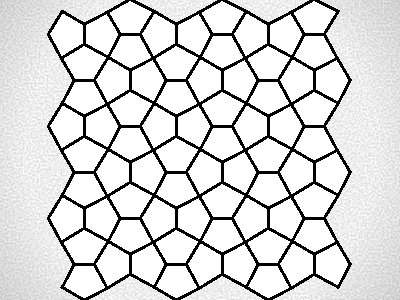 |
| c1N,d5E | 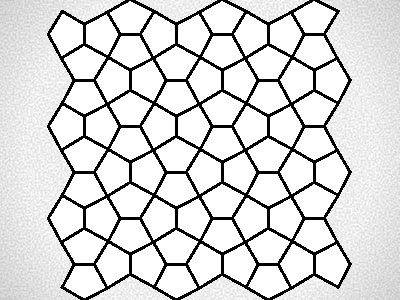 |
| a2W,e1N | 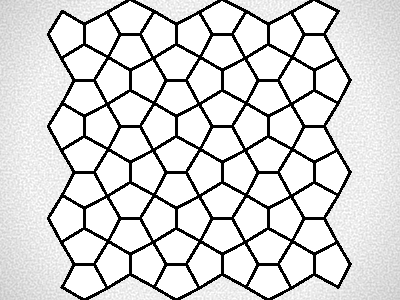 |
| a2E,e4E | 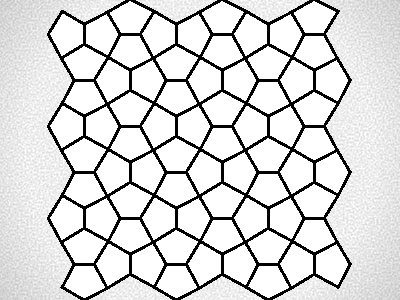 |
| b2S,f3E | 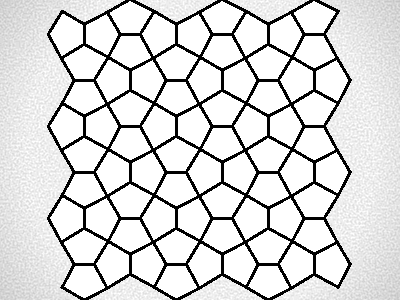 |
| e2E,a2E | 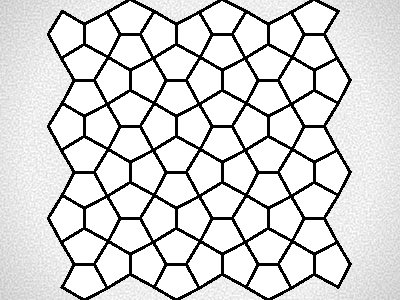 |
| a3S,e4W | 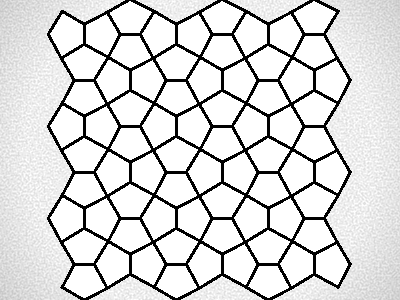 |
| b3E,e2E |  |
| c3S,c5S | 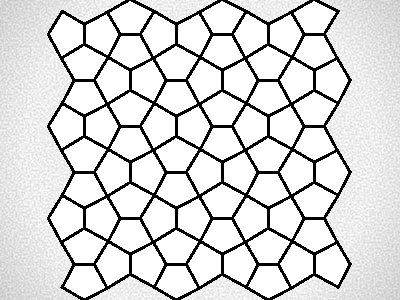 |
| c3N,e3S | 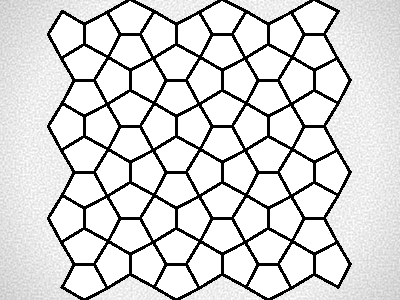 |
| Puzzle | Solution |
|---|---|
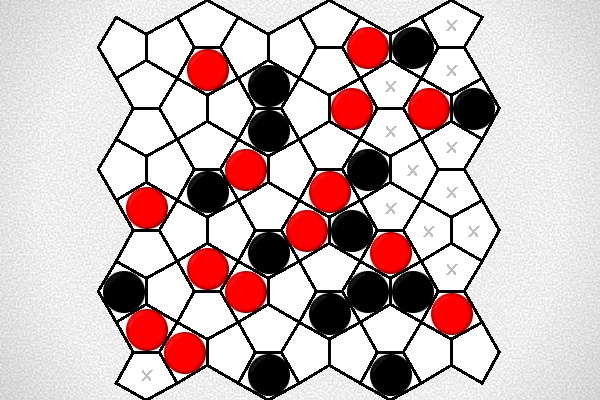 Red to win in 6 moves | |
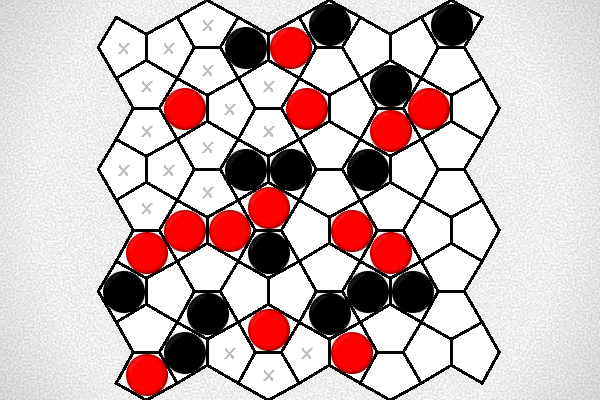 Red to win in 6 moves | |
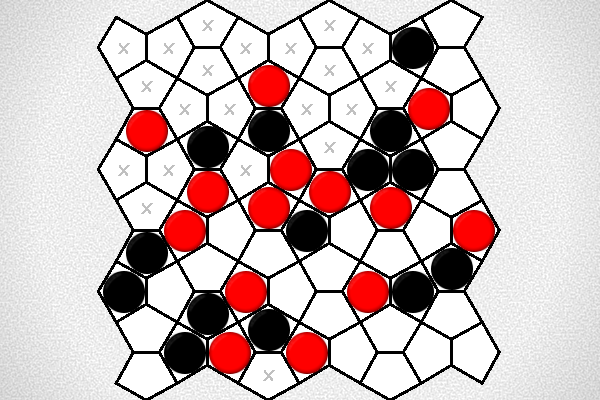 Red to win in 6 moves | |
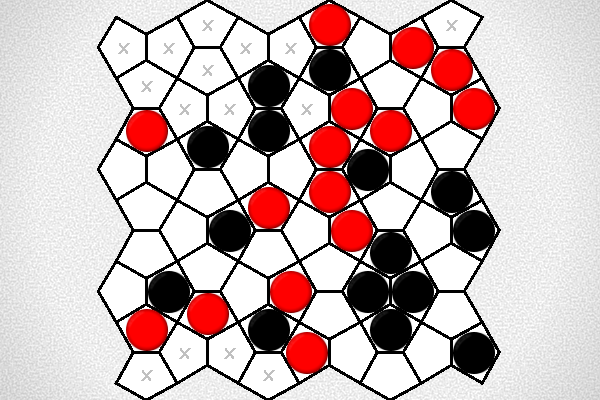 Red to win in 5 moves | |
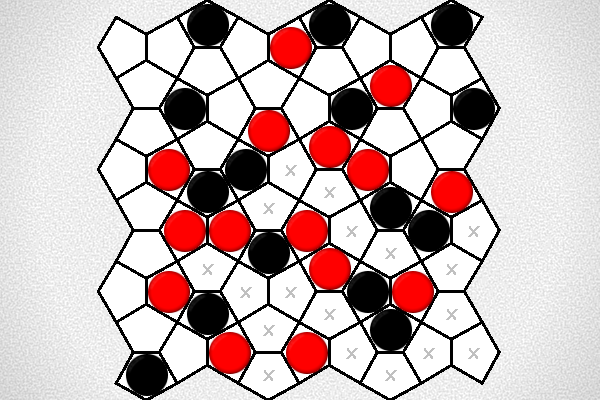 Red to win in 5 moves | |
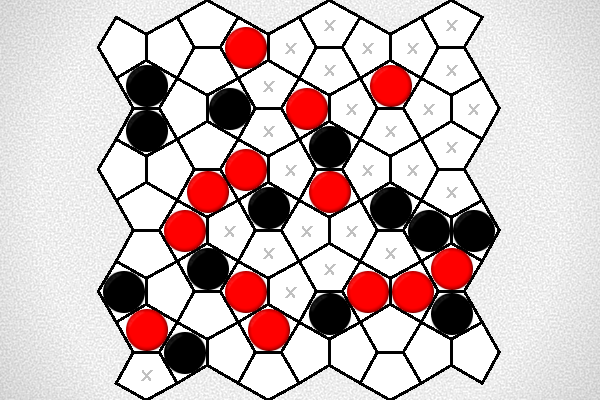 Red to win in 5 moves |
Selection criteria: first move must be unique, and not forced to avoid losing. Beyond that, Puzzles will be rated by the product of [total move]/[best moves] at each step, and the best puzzles selected.